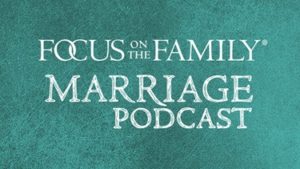Sadly no. We realize that, at first glance, this may seem like a benign, healthy way for your daughter to spend her free time. Based on what’s she’s told you, you might even have the impression that this kind of online activity will help her overcome her struggles with anorexia. But the exact opposite is true. The website your daughter has been frequenting actually promotes eating disorders.
That’s right. What your daughter failed to tell you is that pro-ana (or pro-anorexic) and pro-mia (or pro-bulimic) websites encourage members of their online communities to embrace, celebrate, and persist in anorexia and bulimia as viable lifestyle choices. They all communicate one basic message: there is no cure for eating disorders; therefore, anorexics and bulimics need to affirm eating disorders as an essential part of who they are. To put it another way, these websites are not about recovery – they’re about having fun being sick together. Everything about them is designed to champion the creed, “I believe in the bathroom scales as an indicator of my daily success.”
It’s only fair to point out that, these days, most pro-ana websites include a disclaimer to warn visitors usually – something like the following: “This is a site for those who already have an eating disorder and do not wish to go into recovery … If you do not already have an eating disorder, it is better that you do not develop one now. You may wish to leave.”
But it’s crucial to add that, once past the disclaimer, young browsers will find all kinds of standard Internet features – for example, advice columns, chat rooms, message boards, and photo- and poetry-sharing pages – carefully calculated to attract and hold their loyalty. Dialogue threads and blogs offer visitors tips on how to purge “safely” and how to hide an eating disorder from family and friends. Personal journals chronicle everything from feelings of loneliness to hopelessness and despair. Photos of emaciated women discourage eating and inspire “community members” to take pride in their wasted appearance. Many pro-anas post advice about how to achieve a 100-calorie day (one suggested “meal” was a stock cube and hot water). And most of them sell bracelets and other secret symbols designed to serve as signs of “solidarity and choice” (red stands for anorexia, purple represents bulimia, and black-and-blue symbolize self-mutilation).
There are a number of reasons why a teenager like your daughter might gravitate towards an eating disorder website, but none are bigger or more important than her relationship with her parents. It’s not easy to have to tell you this – we certainly don’t want to come across as if we’re assigning blame or pointing a finger at you – but researchers in this area have discovered that the more parents shame a child, the more likely she will be to retreat to a pro-ana website as a kind of “safe haven.” Since this is the case, we’d suggest that the best way to begin addressing this issue is to sit down with your daughter and find out how she’s feeling about the situation at home and the quality of her interactions with you and your spouse.
We would also like to encourage you to seek professional counseling, and we highly recommend that you do this together as a family. The most successful treatment programs take a family systems approach that involves intensive evaluation and a series of counseling sessions offered in an environment of community and accountability. Our staff would be happy to provide you with referrals to programs of this nature or a list of qualified therapists in your area who specialize in treating eating disorders. Feel free to contact our Counseling department for help.
Resources
If a title is currently unavailable through Focus on the Family, we encourage you to use another retailer.
Hope, Help and Healing for Eating Disorders
Hollow: An Unpolished Tale
Eating Disorders: What Today’s Parents Need to Know
Referrals
The Center: A Place of Hope
Articles
Eating Disorders
Eating Disorders and Kids











